Ministry
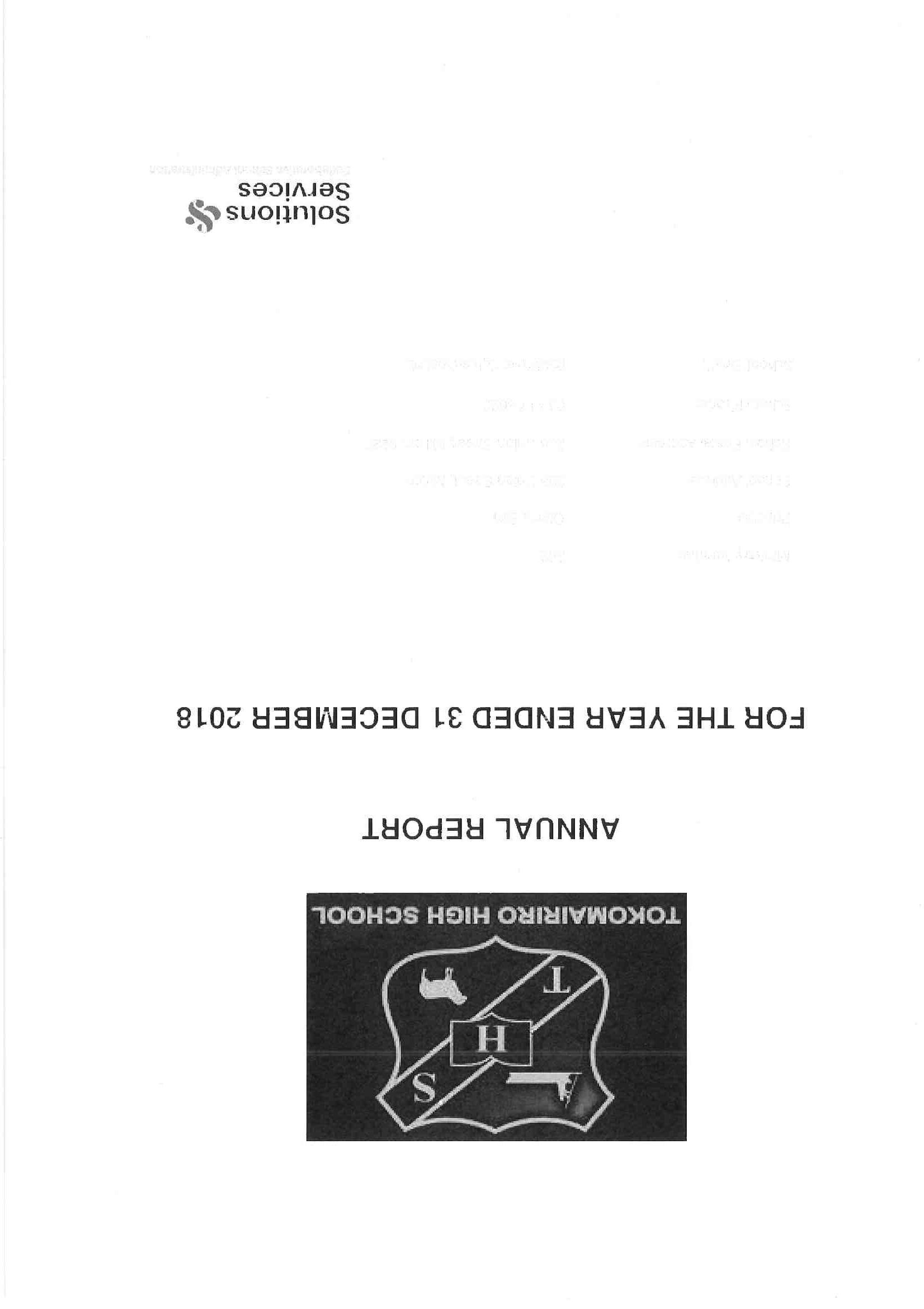
School
School
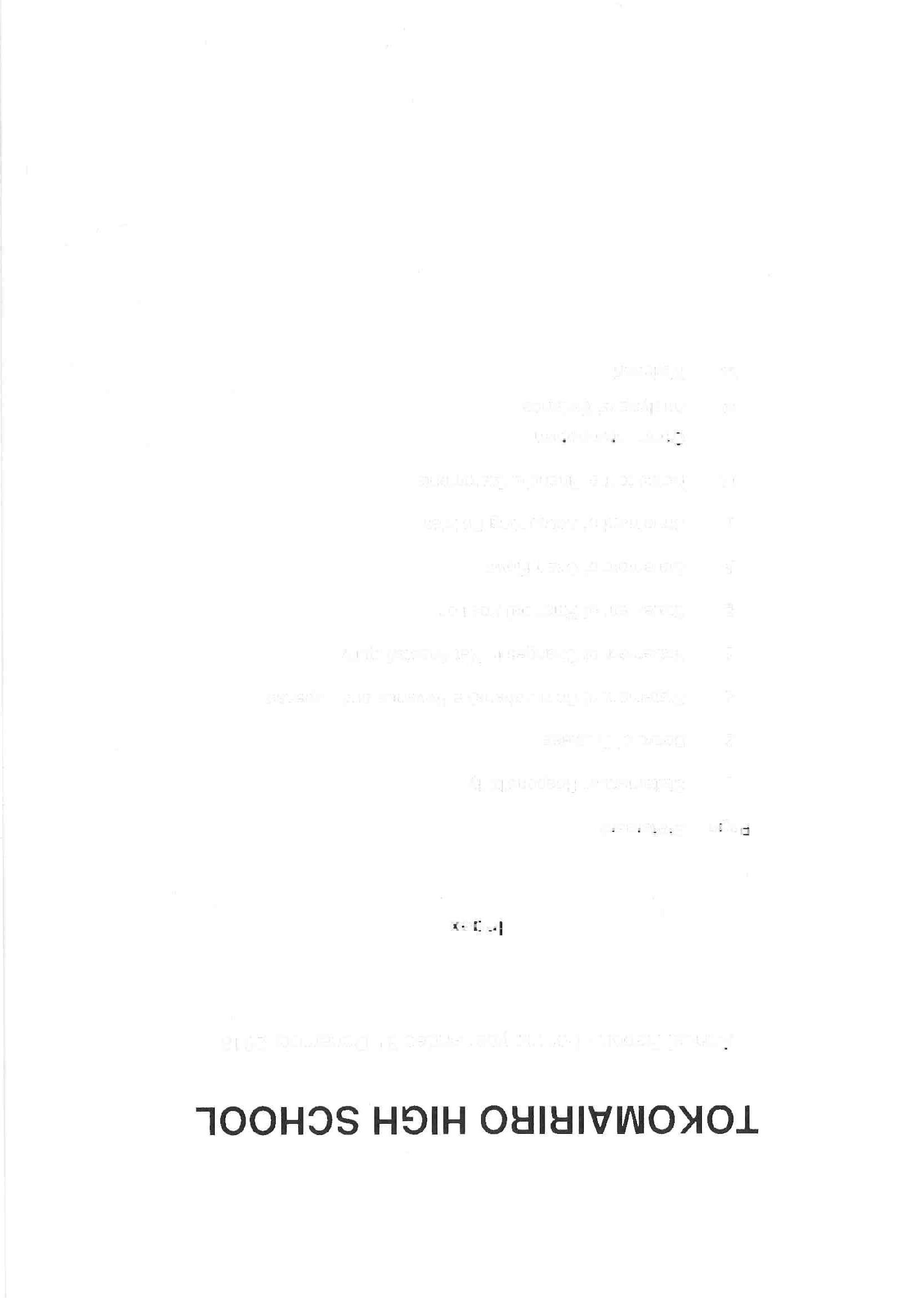

Ministry

School
School

For the year ended 31 December 2018
The Board of Trustees accepts responsibility for the preparation of the annual financial statements and the judgements used jn these financial statements.
The management (including the principal and others as directed by the Board) accepts responsibility for establishing and maintaining a system of internal controls designed to provide reasonable assurance as to the integrity and reliability of the school's financial reporting.
It is the opinion of the Board and management that the annual financial statements for the financial year ended 31 December 2018 fairly reflects the financial position and operations of the school.
The School's 2018 financial statements are authorised for issue by the Board.

Full Name of Board Chairperson
Le^'i^ H^N. (AFull Name of Principal
Signature of Board/Ghairperson
3, /0£> / ^r^
Date:
Signature of Principal
^1/0^ {'•^0(£>]
Date:
For the year ended 31 December 2018
Name
Tanya Altenburg
Glenis Sim
Glenn Johnston
Matthew Jones
Andrew Phillips
Kerry Wilson
Joshua Cross
Paul Stevens
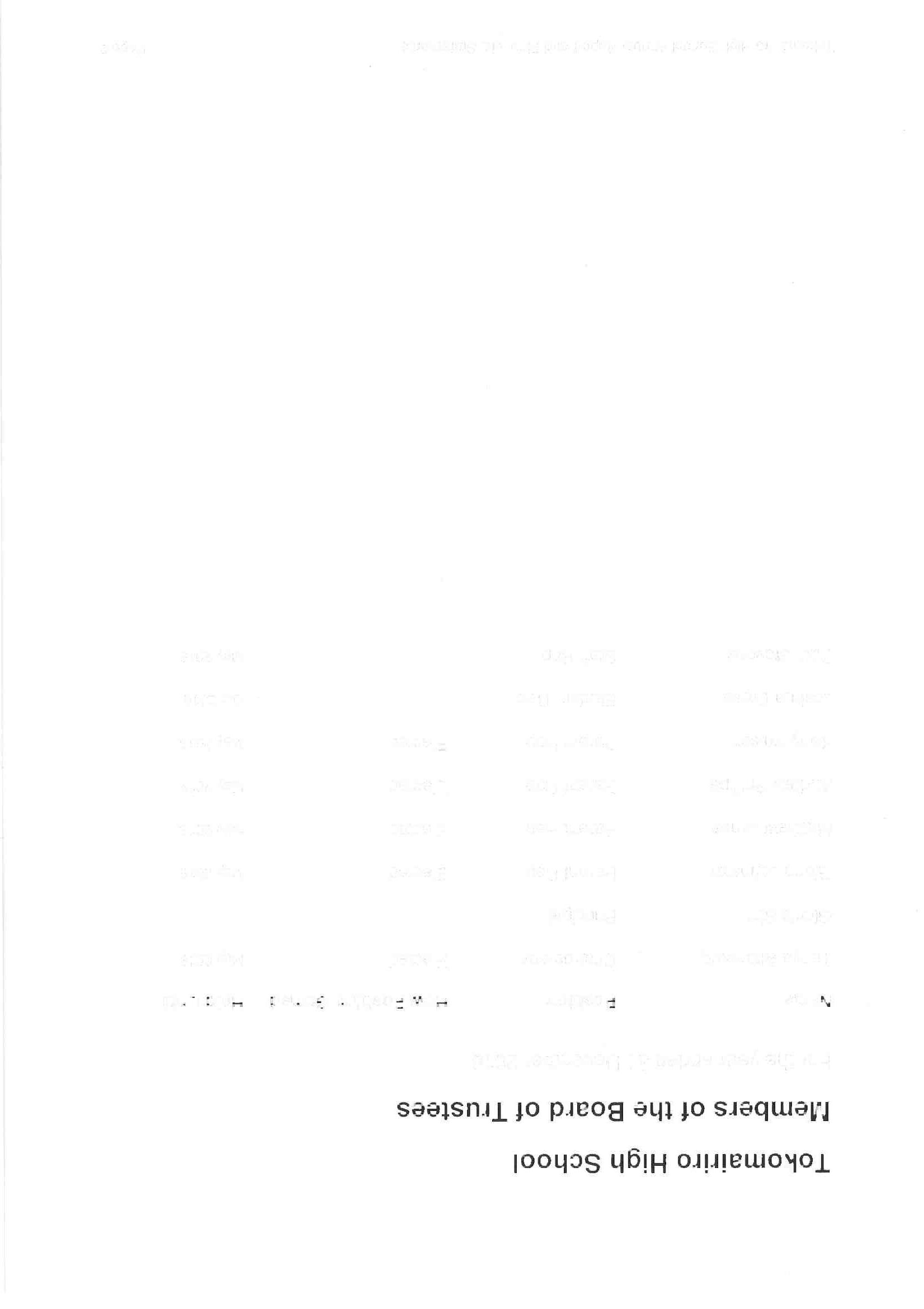
Position
Chairperson
Principal
Parent Rep
Parent Rep
Parent Rep
Parent Rep
Student Rep
Staff Rep
2018
May 2019
For the year ended 31 December 2018

Earned
on Sale of Property, Plant and Equipment
Net (Deficit) / Surplus
Other Comprehensive Revenue and Expenses
3,843,387 388,768 27,624 39,608 54,086 4,353,473 179,848 46,838 2,801,606 182,783 9,187 995,468 120,903
Total Comprehensive Revenue and Expense for the Year 4,286,381 (97,100) 4,188,456 (121,346) (97,100) (121,346) 4,336,633 16,840 16,840 The above Statement of Comprehensive Revenue and Expense should be read in conjunction with the accompanying notes.
Tokomairiro High School
For the year ended 31 December 2018

Balance at 1 January 1,168,000 1,168,000 1,131,110
Total comprehensive revenue and expense for the year (97,100) (1 21,346) 16,840
Capital Contributions from the Ministry of Education Contribution - Furniture and Equipment Grant - - 20,610
Changes in prize fund equity (307) - (560)
at 31 December
The above Statement of Changes in Net Assets/Equity should be read in conjunction with the accompanying notes.
As at 31 December 2018

417,866 668,542 647,875 647,875
65,968 148,417 ,168,000 ,168,000
1,046,654 1 1 1 ,086,408 215,341 58,945
The above Statement of Financial Position should be read in conjunction with the accompanying notes.
For the year ended 31 December 2018

Note
Cash flows from Operating Activities
Government Grants
Locally Raised Funds
International Students
Goods and Services Tax (net)
Payments to Employees Payments to Suppliers
Cyclical Maintenance Payments in the Year
Interest Paid
Interest Received
Net cash from / (to) the Operating Activities
Cash flows from Investing Activities
Proceeds from Sale of PPE (and Intangibles)
Purchase of PPE (and Intangibles)
Purchase of Investments
Net cash from / (to) the Investing Activities
Cash flows from Financing Activities
Furniture and Equipment Grant
Finance Lease Payments
Painting contract payments
Funds Held for Capital Works Projects
Net cash from Financing Activities
Net increase/(decrease) in cash and cash equivalents
Cash and cash equivalents at the beginning of the year
Cash and cash equivalents at the end of the year
26,698 (4,736) (557,612) (937,589) (53,918) (10,946) 19,373
Actual $ 952,404 361,465 67,208 (5,804) (492,349) (774,379) (10,019) 31,092 9 9 (135,023) 47,843 (18,738) (18,180) 10,925 (48,738) 100,422 (6,238) 45,446 (78,652)
129,618 (17,462) (29,937) (47,399) 20,610 (89,054) (18,896) 101,735 14,395 96,614 52,135 148,749
The statement of cash flows records only those cash flows directly within the control of the School. This means centrally funded teachers' salaries and the use of land and buildings grant and expense have been omitted.
The above Cash Flow Statement should be read in conjunction with the accompanying notes.

For the year ended 31 December 2018
1.1. Reporting Entity
Tokomairiro High School (the School) is a Crown entity as specified in the Crown Entities Act 2004 and a school as described in the Education Act 1989. The Board of Trustees (the Board) is of the view that the School is a public benefit entity for financial reporting purposes.
1.2. Basis of Preparation
Reporting Period
The financial reports have been prepared for the period 1 January 2018 to 31 December 201 8 and in accordance with the requirements of the Public Finance Act 1989.
Basis of Preparation
The financial statements have been prepared on a going concern basis, and the accounting policies have been consistently applied throughout the period.
Financial Reporting Standards Applied
The Education Act 1989 requires the School, as a Crown entity, to prepare financial statements in accordance with generally accepted accounting practice. The financial statements have been prepared in accordance with generally accepted accounting practice in New Zealand, applying Public Sector Public Benefit Entity (PBE) Standards Reduced Disclosure Regime as appropriate to public benefit entities that qualify for Tier 2 reporting. The school is considered a Public Benefit Entity as it meets the criteria specified as "having a primary objective to provide goods and/or services for community or social benefit and where any equity has been provided with a view to supporting that primary objective rather than for financial return to equity holders".
PBE Accounting Standards Reduced Disclosure Regime
The School qualifies for Tier 2 as the school is not publicly accountable and is not considered large as it falls below the expenditure threshold of $30 million per year. All relevant reduced disclosure concessions have been taken.
Measurement Base
The financial statements are prepared on the historical cost basis unless otherwise noted in a specific accounting policy.
Presentation Currency
These financial statements are presented in New Zealand dollars, rounded to the nearest dollar.
Specific Accounting Policies
The accounting policies used in the preparation of these financial statements are set out below.
Critical Accounting Estimates And Assumptions
The preparation of financial statements requires management to make judgements, estimates and assumptions that affect the application of accounting policies and the reported amounts of assets, liabilities, revenue and expenses. Actual results may differ from these estimates.
Estimates and underlying assumptions are reviewed on an ongoing basis. Revisions to accounting estimates are recognised in the period in which the estimate is revised and in any future periods affected.
The School reviews the estimated useful lives of property, plant and equipment at the end of each reporting date. The School believes that the estimated useful lives of the property, plant and equipment as disclosed in the Significant Accounting Policies are appropriate to the nature of the property, plant and equipment at reporting date. Property, plant and equipment is disclosed at note 12.
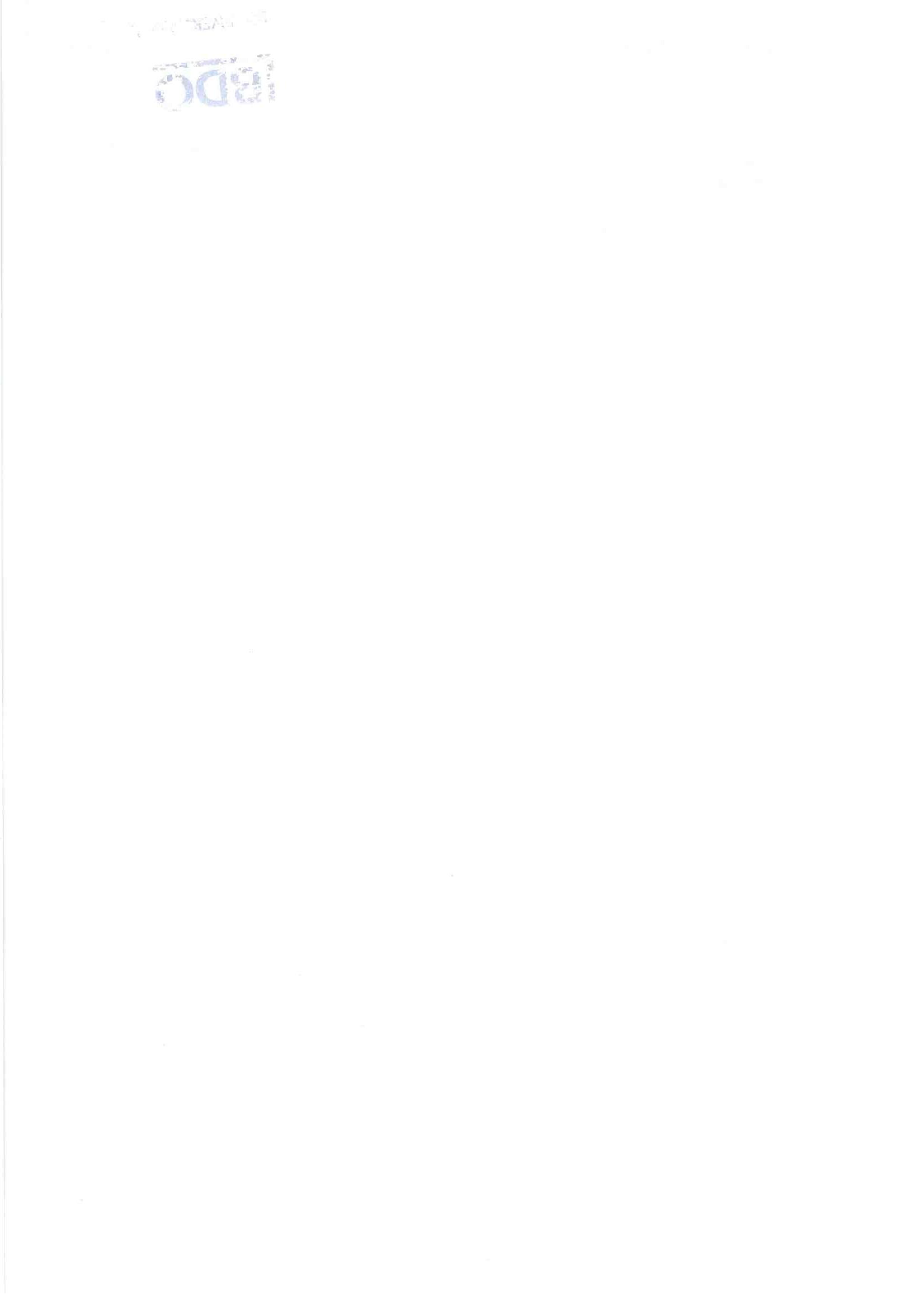
Critical Judgements in applying accounting policies
Management has exercised the following critical judgements in applying accounting policies:
Classification of leases
The School reviews the details of lease agreements at the end of each reporting date. The School believes the classification of each lease as either operation or finance is appropriate and reflects the nature of the agreement in place. Finance leases are disclosed at note 18.
Recognition of grants
The School reviews the grants monies received at the end of each reporting period and whether any require a provision to carry forward amounts unspent. The School believes all grants received have been appropriately recognised as a liability if required. Government grants are disclosed at note 2.
The school receives funding from the Ministry of Education. The following are the main types of funding that the School receives;
Operational grants are recorded as revenue when the School has the rights to the funding, which is in the year that the funding is received.
Teachers salaries grants are recorded as revenue when the School has the rights to the funding in the salary period they relate to. The grants are not received in cash by the School and are paid directly to teachers by the Ministry of Education.
Use of land and buildings grants are recorded as revenue in the period the School uses the land and buildings. These are not received in cash by the School as they equate to the deemed expense for using the land and buildings which are owned by the Crown.
Other Grants
Other grants are recorded as revenue when the School has the rights to the funding, unless there are unfulfilled conditions attached to the grant, in which case the amount relating to the unfulfilled conditions is recognised as a liability and released to revenue as the conditions are fulfilled.
Donations, Gifts and Bequests
Donations, gifts and bequests are recorded as revenue when their receipt is formally acknowledged by the School.
Interest Revenue
Interest Revenue earned on cash and cash equivalents and investments is recorded as revenue in the period it is earned.
1.4.
The property from which the School operates is owned by the Crown and managed by .the Ministry of Education on behalf of the Crown. The School's use of the land and buildings as occupant is based on a property occupancy document as gazetted by the Ministry. The expense is based on an assumed market rental yield on the value of land and buildings as used for rating purposes. This is a non-cash expense that is offset by a non-cash grant from the Ministry.
1.5. Operating Lease Payments
Payments made under operating leases are recognised in the Statement of Comprehensive Revenue and Expense on a straight line basis over the term of the lease.
1.6. Finance Lease Payments
Finance lease payments are apportioned between the finance charge and the reduction of the outstanding liability. The finance charge is allocated to each period during the lease term on an effective interest basis.
1.7. Cash and Cash Equivalents
Cash and cash equivalents include cash on hand, bank balances, deposits held at call with banks, and other short term highly liquid investments with original maturities of 90 days or less, and bank overdrafts. The carrying amount of cash and cash equivalents represent fair value.
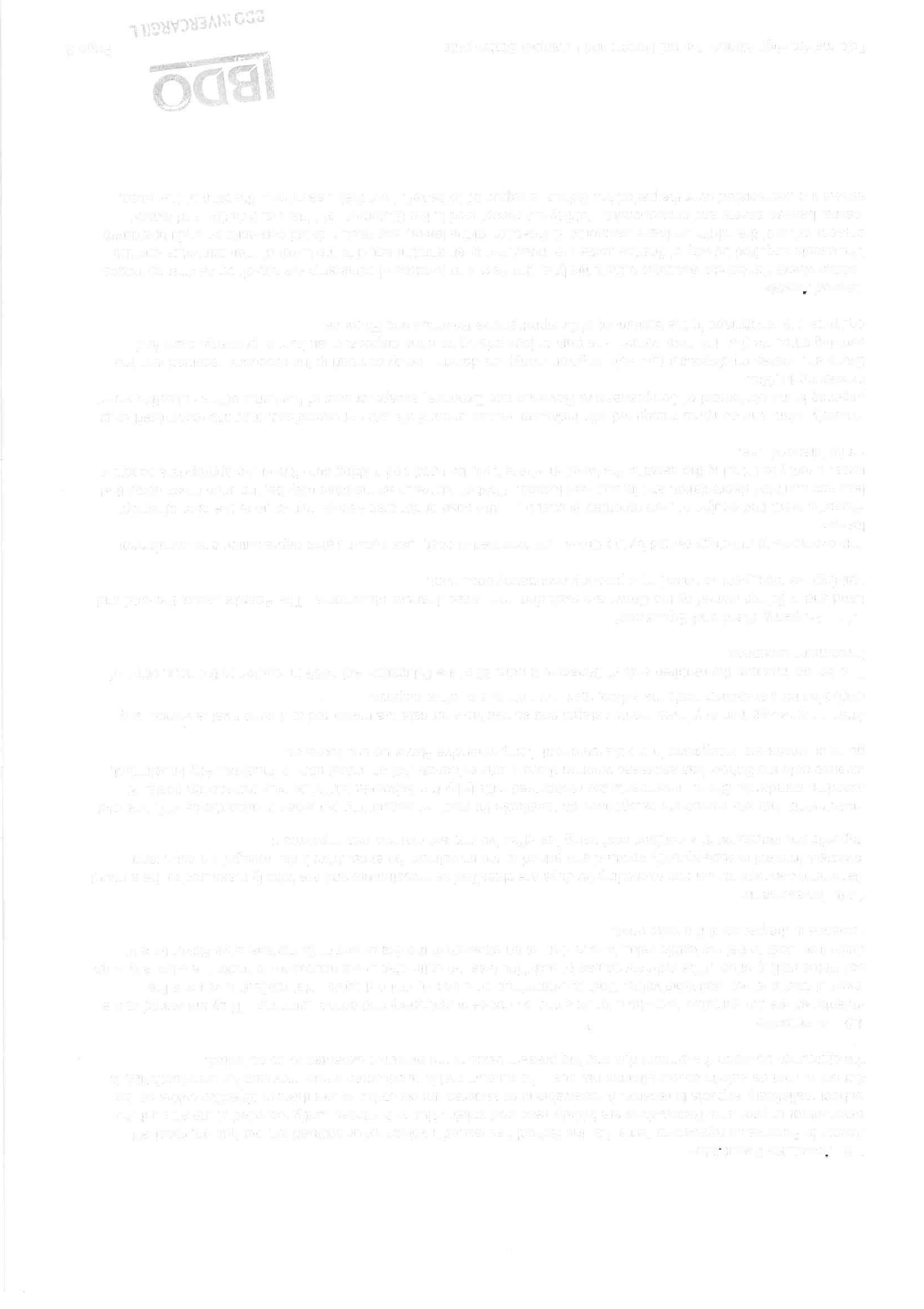
Accounts Receivable represents items that the School has issued invoices for or accrued for, but has not received payment for at year end. Receivables are initially recorded at fair value and subsequently recorded at the amount the School realistically expects to receive. A receivable is considered uncollectable where there is objective evidence the School will not be able to collect all amounts due. The amount that is uncollectable (the provision for uncollectibility) is the difference between the amount due and the present value of the amounts expected to be collected.
Inventories are consumable items held for sale and comprise of stationery and school uniforms. They are stated at the lower of cost and net realisable value. Cost is determined on a first in, first out basis. Net realisable value is the estimated selling price in the ordinary course of activities less the estimated costs necessary to make the sale. Any write down from cost to net realisable value is recorded as an expense in the Statement of Comprehensive Revenue and Expense in the period of the write down.
Bank term deposits for periods exceeding 90 days are classified as investments and are initially measured at the amount invested. Interest is subsequently accrued and added to the investment balance. After initial recognition bank term deposits are measured at amortised cost using the effective interest method less impairment.
investments that are shares are categorised as "available for sale" for accounting purposes in accordance with financial reporting standards. Share investments are recognised initially by the School at fair value plus transaction costs. At balance date the School has assessed whether there is any evidence that an investment is impaired. Any impairment, gains or losses are recognised in the Statement of Comprehensive Revenue and Expense.
After initial recognition any investments categorised as available for sale are measured at their fair value without any deduction for transaction costs the school may incur on sale or other disposal.
The School has met the requirements of Schedule 6 para 28 of the Education Act 1989 in relation to the acquisition of investment securities.
Land and buildings owned by the Crown are excluded from these financial statements. The Board's use of the land and buildings as 'occupant' is based on a property occupancy document.
Improvements to buildings owned by the Crown are recorded at cost, less accumulated depreciation and impairment losses.
Property, plant and equipment are recorded at cost or, in the case of donated assets, fair value at the date of receipt, less accumulated depreciation and impairment losses. Cost or fair value as the case may be, includes those costs that relate directly to bringing the asset to the location where it will be used and making sure it is in the appropriate condition for its intended use.
Property, plant and equipment acquired with individual values under $500 are not capitalised, they are recognised as an expense in the Statement of Comprehensive Revenue and Expense, except for sets of like items with a collective worth exceeding $1,000.
Gains and losses on disposals (/.e. sold or given away) are determined by comparing the proceeds received with the carrying amounts (/.e. the book value). The gain or loss arising from the disposal of an item of property, plant and equipment is recognised in the Statement of Comprehensive Revenue and Expense.
Leases where the School assumes substantially all the risks and rewards of ownership are classified as finance leases. The assets acquired by way of finance lease are measured at an amount equal to the lower of their fair value and the present value of the minimum lease payments at inception of the lease, less accumulated depreciation and impairment losses. Leased assets and corresponding liability are recognised in the Statement of Financial Position and leased assets are depreciated over the period the School is expected to benefit from their use or over the term of the lease.

Depreciation
Property, plant and equipment except for library resources are depreciated over their estimated useful lives on a straight line basis. Library resources are depreciated on a diminishing value basis. Depreciation of all assets is reported in the Statement of Comprehensive Revenue and Expense.
The estimated useful lives of the assets are:
Building improvements to Crown Owned Assets 5 - 50 years
Furniture and equipment 5-20 years
Information and communication technology 3-10 years
Motor vehicles 5 years
Leased Assets 3 -5 years
Library resources 12.5% Diminishing value
1.12. Impairment of property, plant and equipment and intangible assets
The school does not hold any cash generating assets. Assets are considered cash generating where their primary objective is to generate a commercial return.
Non cash generating assets
Property, plant, and equipment and intangible assets held at cost that have a finite useful life are reviewed for impairment whenever events or changes in circumstances indicate that the carrying amount may not be recoverable. An impairment loss is recognised for the amount by which the asset's carrying amount exceeds its recoverable service amount. The recoverable service amount is the higher of an asset's fair value less costs to sell and value in use.
Value in use is determined using an approach based on either a depreciated replacement cost approach, restoration cost approach, or a service units approach. The most appropriate approach used to measure value in use depends on the nature of the impairment and availability of information.
If an asset's carrying amount exceeds its recoverable service amount, the asset is regarded as impaired and the carrying amount is written down to the recoverable amount. The total impairment loss is recognised in the surplus or deficit.
The reversal of an impairment loss is recognised in the surplus or deficit.
Accounts Payable represents liabilities for goods and services provided to the School prior to the end of the financial year which are unpaid. Accounts Payable are recorded at the amount of cash required to settle those liabilities. The amounts are unsecured and are usually paid within 30 days of recognition.
Short-term employee entitlements
Employee benefits that are due to be settled within 12 months after the end of the period in which the employee renders the related service are measured based on accrued entitlements at current rates of pay. These include salaries and wages accrued up to balance date, annual leave earned to but not yet taken at balance date.
Long-term employee entitlements
Employee benefits that are due to be settled beyond 12 months after the end of the period in which the employee renders the related service, such as long service leave and retirement gratuities, have been calculated on an actuarial basis. The calculations are based on:
• likely future entitlements accruing to staff, based on years of service, years to entitlement, the likelihood that staff will reach the point of entitlement, and contractual entitlement information; and
• the present value of the estimated future cash flows
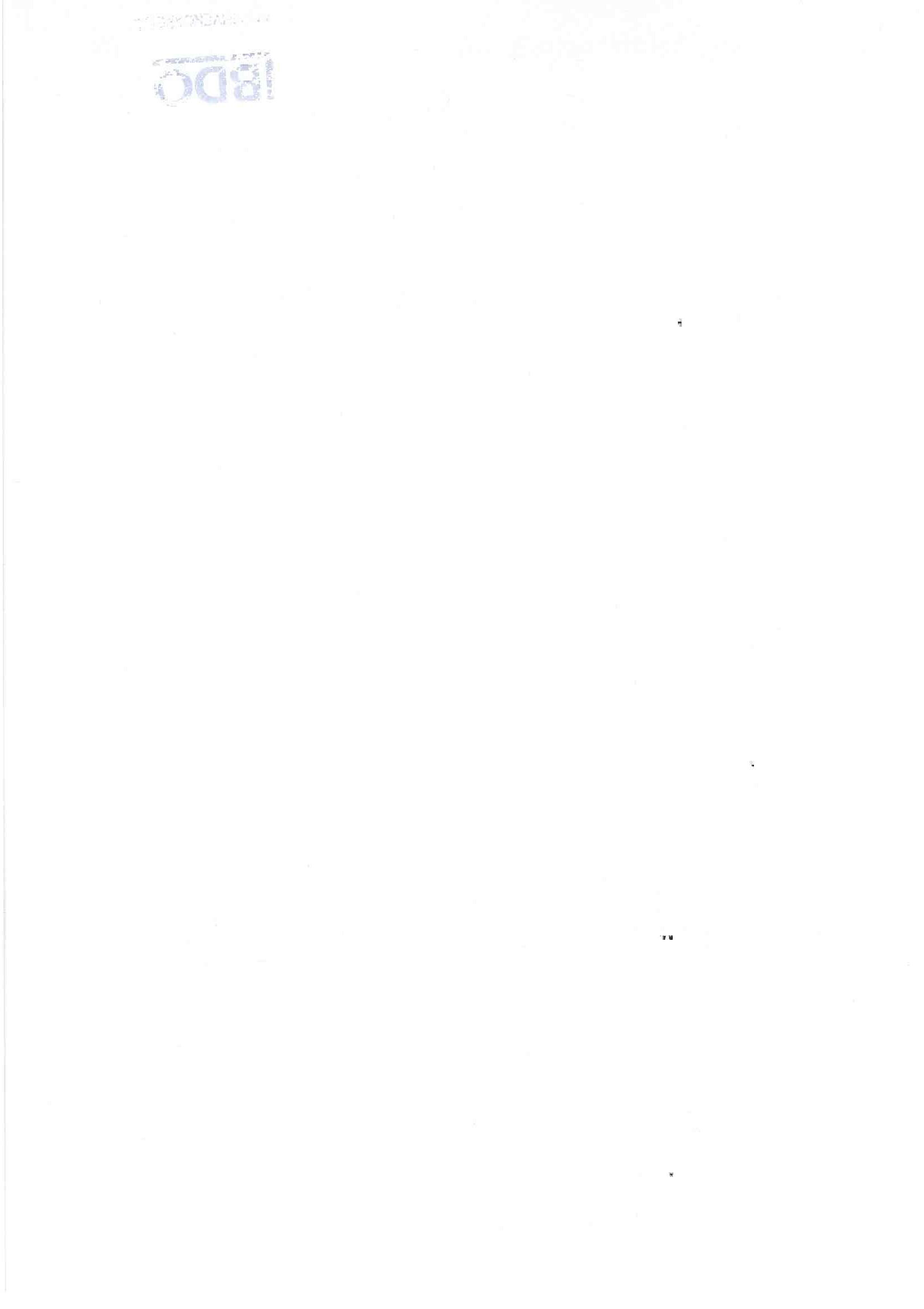
Revenue received in advance relates to fees received from international students and grants received where there are unfulfilled obligations for the School to provide services in the future. The fees are recorded as revenue as the obligations are fulfilled and the fees earned.
The School holds sufficient funds to enable the refund of unearned fees in relation to international students, should the School be unable to provide the services to which they relate.
Shared Funds are held on behalf of a cluster of participating schools as agreed with the Ministry of Education. The cluster of schools operate activities outside of school control. These amounts are not recorded in the Statement of Revenue and Expense. The School holds sufficient funds to enable the funds to be used for their intended purpose.
The property from which the School operates is owned by the Crown, and is vested in the Ministry. The Ministry has gazetted a property occupancy document that sets out the Board's property maintenance responsibilities. The Board is responsible for maintaining the land, buildings and other facilities on the School site in a state of good order and repair.
Cyclical maintenance, which involves painting the interior and exterior of the School, makes up the most significant part of the Board's responsibilities outside day-to-day maintenance. The provision for cyclical maintenance represents the obligation the Board has to the Ministry and is based on the Board's ten year property plan (10YPP).
The School's financial assets comprise cash and cash equivalents, accounts receivable, and investments. All of these financial assets, except for investments that are shares, are categorised as "loans and receivables" for accounting purposes in accordance with financial reporting standards.
Investments that are shares are categorised as "available for sale" for accounting purposes in accordance with financial reporting standards.
The School's financial liabilities comprise accounts payable, borrowings, finance lease liability, and painting contract liability. All of these financial liabilities are categorised as "financial liabilities measured at amortised cost" for accounting purposes in accordance with financial reporting standards.
1.19.
The financial statements have been prepared on a GST exclusive basis, with the exception of accounts receivable and accounts payable which are stated as GST inclusive.
The net amount of GST paid to, or received from, the IRD, including the GST relating to investing and financing activities, is classified as a net operating cash flow in the statements of cash flows.
Commitments and contingencies are disclosed exclusive of GST.
1.20. Budget Figures
The budget figures are extracted from the School budget that was approved by the Board at the start of the year.
1.21. Services received in-kind
From time to time the School receives services in-kind, including the time of volunteers. The School has elected not to recognise services received in kind in the Statement of Comprehensive Revenue and Expense.
2. Government Grants Operational grants Teachers' salaries grants Use of Land and Buildings grants
Other MoE Grants
Other government grants
3. Locally Raised Funds
Local funds raised within the School's community are made up of:
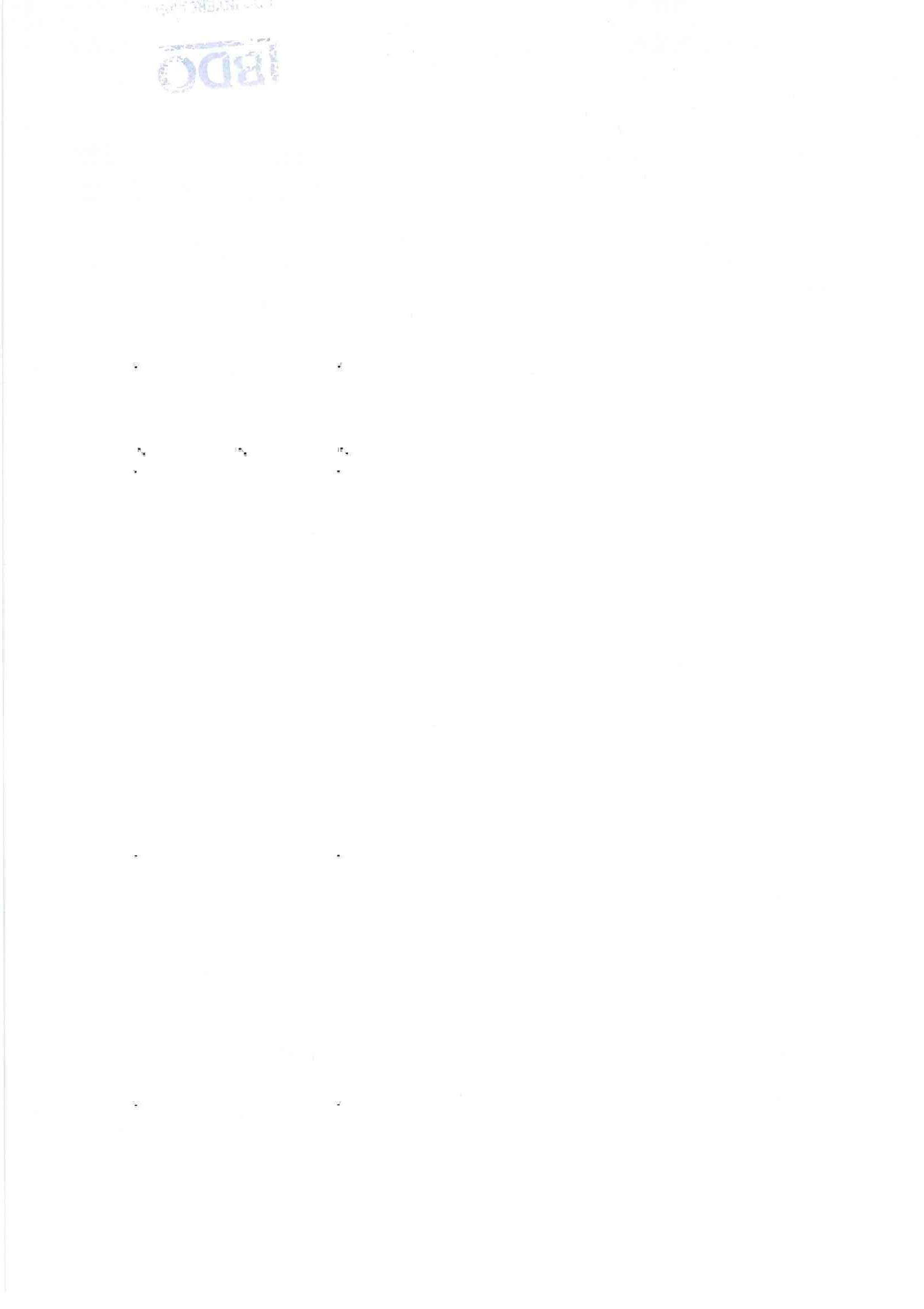
4. International Student Revenue and Expenses
Student Roll
5. Learning Resources

Library
Employee benefits - salaries
6. Administration
Audit Fee
Board of Trustees Fees
Board of Trustees Expenses Communication Consumables
Lease
Benefits - Salaries
Service Providers, Contractors and Consultancy
7. Property
Caretaking and Cleaning Consumables
Cyclical Maintenance Provision Grounds
Heat, Light and Water Rates
Repairs and Maintenance
Use of Land and Buildings
Employee Benefits - Salaries
(Unaudited) 6,350 31,714
613,236 108,600 862,350 2017
$ 234,095 26,231 2,931 2,520,357 17,992 2,801,606 2017 Actual 4,637 4,764 2,894 3,940 20,321 17,893 5,093 108,298 12,118 2,825 182,783 2017 Actual $ 5,970 17,938 13,726 58,112 4,727 16,980 771,707 106,308 995,468
The use of land and buildings figure represents 8% of the school's total property value. This is used as a 'proxy' for the market rental of the property. Property values are established as part of the nation-wide revaluation exercise that is conducted every 30 June for the Ministry of Education's year-end reporting purposes.
8. Depreciation of Property, Plant and Equipment
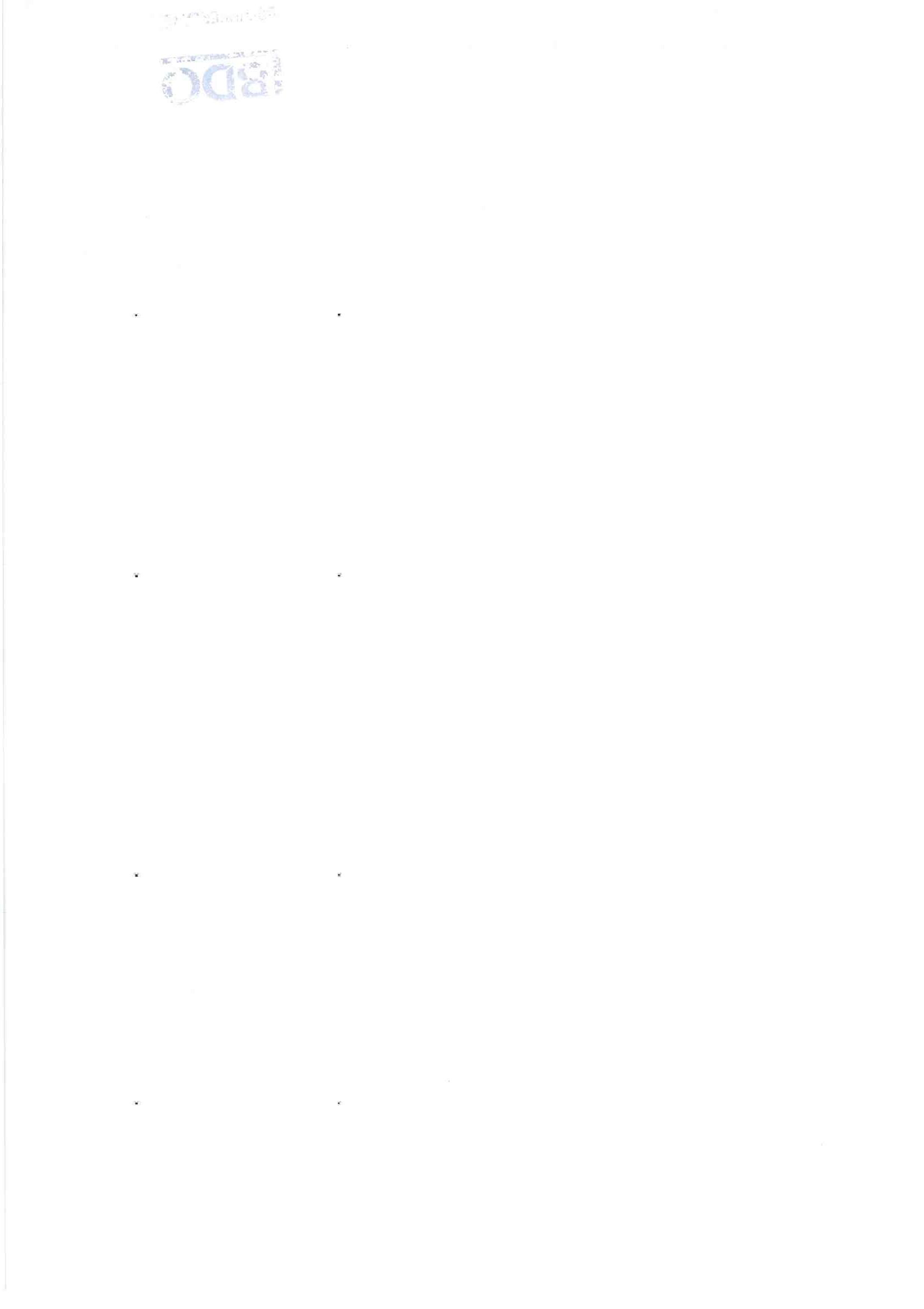
9. Cash and Cash Equivalents
Current Account
equivalents and bank overdraft for Cash Flow Statement
The carrying value of short-term deposits with maturity dates of 90 days or less approximates their fair value.
Of the $70,097 Cash and Cash Equivalents, $16,694 is held by the School on behalf of the Ministry of Education. These funds are required to be spent in 2019 on Crown owned school buildings under the School's Five Year Property Plan.
10. Accounts Receivable
12. Investments
The School's investment activities are classified as follows:

The carrying value of long term deposits longer than 12 months approximates their fair value at 31 December 2018.
13. Property, Plant and Equipment 2018
and Equipment
Library Resources
Balance at 31 December 2018
Library Resources Balance at 31 December 2018
at 31 December 2017
(11,256) (32,851) (22,265) (49,805) (4,726) (120,903)
(542,880) (200,906) (80,202) (99,485) (1,125,867)
Accounts Payable

The carrying value of payables approximates their fair value. 15. Revenue Received in Advance
16. Provision for Cyclical Maintenance Provision at the Start of the Year
In 2010 the Board signed an agreement with Scheduled Maintenance Services Ltd (the contractor) for an agreed programme of work covering a seven year period. The programme provides for an interior and exterior repaint of the Ministry owned buildings in 2016, with regular maintenance in subsequent years. The agreement has an annual commitment of $28,914. The liability is the best estimate of the actual amount of work performed by the contractor for which the contractor has not been paid at balance sheet date. The liability has not been adjusted for inflation and the effect of the time value of money.
The School has entered into a number of finance lease agreements for computers. Minimum lease payments payable:
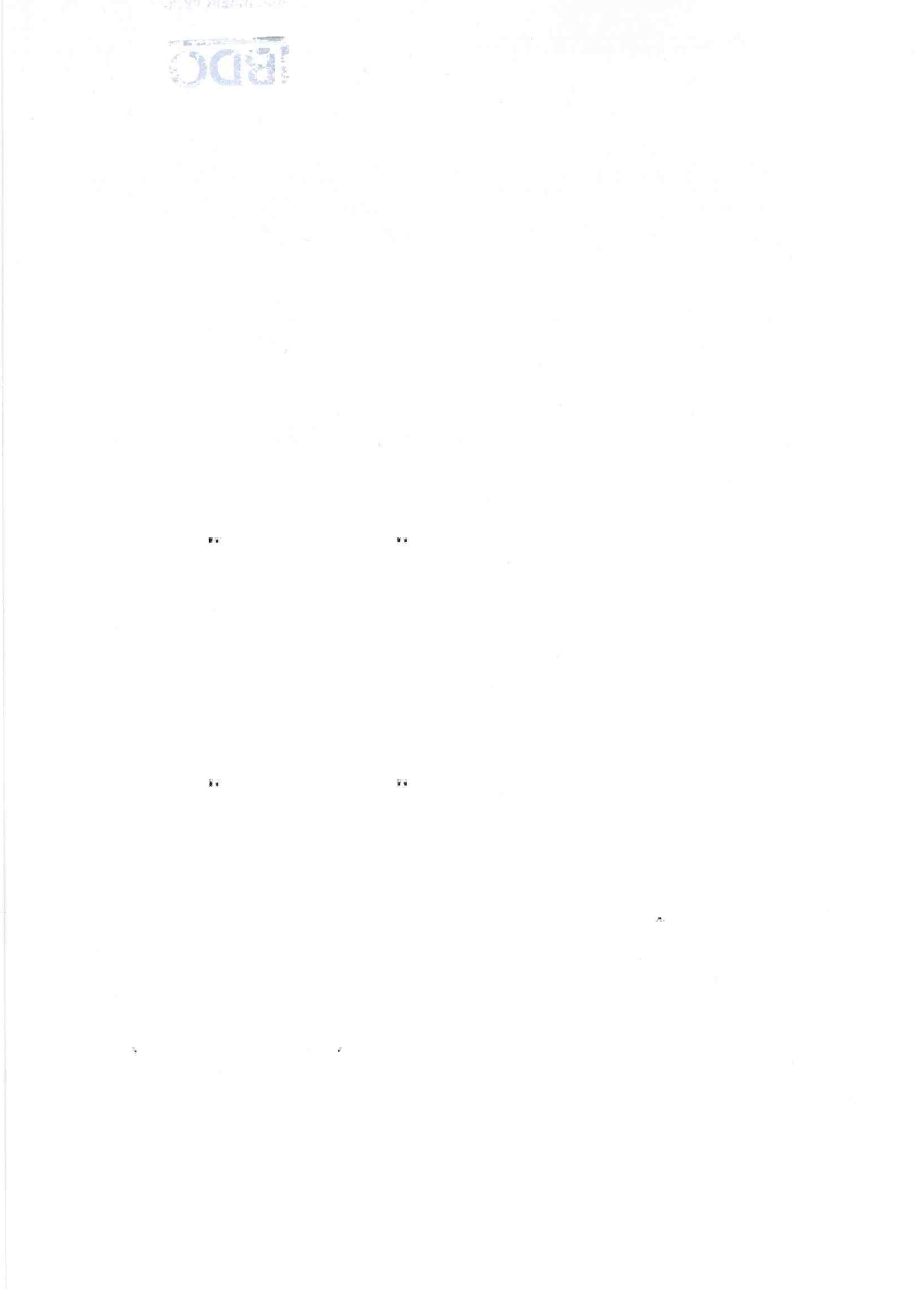
No Later than One Year Later than One Year and no Later than Five Years Later than Five Years
During the year the School received and applied funding from the Ministry of Education for the following capital works projects:
Held on Behalf of the
The School is a controlled entity of the Crown, and the Crown provides the major source of revenue to the school. The school enters into transactions with other entities also controlled by the Crown, such as government departments, state-owned enterprises and other Crown entities. Transactions with these entities are not disclosed as they occur on terms and conditions no more or less favourable than those that it is reasonable to expect the school would have adopted if dealing with that entity at arm's length.
Related party disclosures have not been made for transactions with related parties that are within a normal supplier or client/recipient relationship on terms and condition no more or less favourable than those that it is reasonable to expect the school would have adopted in dealing with the party at arm's length in the same circumstances. Further, transactions with other government agencies (for example, Government departments and Crown entities) are not disclosed as related party transactions when they are consistent with the normal operating arrangements between government agencies and undertaken on the normal terms and conditions for such transactions.
21. Remuneration
Key management personnel compensation
Key management personnel of the School include all trustees of the Board, Principal, Deputy and Assistant Principals.

Board Members
Remuneration
Full-time equivalent members
Leadership Team
Remuneration
Full-time equivalent members
Total key management personnel remuneration
Total full-time equivalent personnel
The full time equivalent for Board members has been determined based on attendance at Board meetings, Committee meetings and for other obligations of the Board, such as stand downs and suspensions, plus the estimated time for Board members to prepare for meetings.
Principal
The total value of remuneration paid or payable to the Principal was in the following bands:
Salaries and Other Short-term Employee Benefits: Salary and Other Payments Benefits and Other Emoluments Termination Benefits
Other Employees
The number of other employees with remuneration greater than $100,000 was in the following bands:
The disclosure for 'Other Employees' does not include remuneration of the Principal.
22. Compensation and Other Benefits Upon Leaving
The total value of compensation or other benefits paid or payable to persons who ceased to be trustees, committee member, or employees during the financial year in relation to that cessation and number of persons to whom all or part of that total was payable was as follows:
Total $
Number of People
23. Contingencies
There are no contingent liabilities (except as noted below) and no contingent assets as at 31 December 2017 (Contingent liabilities and assets at 31 December 2016: nil).
24. Commitments
(a) Capital Commitments
As at 31 December 201 8 the Board has not entered into any contract agreements for capital works.
(Capital commitments at 31 December 2017: nil)
(b) Operating Commitments
As at 31 December 2018 the Board has entered into the following contracts:
(a) operating lease of a photocopier;
No later than One Year - 2,897
Later than One Year and No Later than Five Years
Later than Five Years 2,897
25. Managing Capital
The School's capital is its equity and comprises capital contributions from the Ministry of Education for property, plant and equipment and accumulated surpluses and deficits. The School does not actively manage capital but attempts to ensure that income exceeds spending in most years. Although deficits can arise as planned in particular years, they are offset by planned surpluses in previous years or ensuing years.
26. Financial Instruments
The carrying amount of financial assets and liabilities in each of the financial instrument categories are as follows:
and Receivables

Cash and Cash Equivalents
Investments - Term Deposits Total Loans and Receivables
Financial liabilities measured at amortised cost
Leases
Painting Contract Liability
Total Financial Liabilities Measured at Amortised Cost
27. Events After Balance Date
There were no significant events after the balance date that impact these financial statements.
28. Breach of borrowing limit
The school was in breach of Section 67 of the Education Act 1989 due to its borrowings exceeding 10% of the operational grant funding for the year ended 31 December 2018. The calculated annual cost for the upcoming year, excluding the MOE portion, was $85,703 whereas 10% of the operational grant was $76,612.
School Name:
Strategic Aim:
Annual Aim:
Target
Baseline Data:

Actions
What did we do?
IMytli'AII^IAISI^ISBSfilSTSRI]
School Number: 392
Each student will receive an education that enables them to reach their highest level.
Striving for personal Excellence - strive for an NCEA Endorsement Merit/ Excellence OR Vocational Pathways award.
1. 50% of students gain NCEA with a Merit / Excellence or Vocational Pathways award.
2. At ieast 50% of NCEA Level 1 students gain a Merit or Excellence Endorsement.
(Level 1 2017): 7 (19%) students gained NCEA Level 1 with Merit. Levei 2 2018: 7 (20%) students gained NCEA Level 2 with Merit or Excellence, 6 (9%) gained a Vocational Pathways award. 12(44%) year 13 students left school with a Vocational award.
(Y10 2017}: Reading 13/35 (35%) students High or Excellent Achievement in most aspects. Writing 12/36 (33%) students High or Excellent Achievement in most aspects.
Focused on persona! excellence school wide. Senior leaders, teachers/ students talked about personal excellence
Focus on Merit and Excellence within individual subjects. This was across all levels of the school. HODs / teachers within departments worked more closely with students to understand requirements of merit and excellence.
Closely monitor the progress of ai! senior students.
House Group/Mentor teacher regularly meet with each student to discuss progress on their achievement targets and learning plan.
NCEA Level 1: 9 Excellence and 19 merit course endorsements.
7 (23%) students gained a Merit endorsement and 2 (6%) students gained Excellence endorsements.
90% (28 students) gained NCEA Level 1. 3 students did not - two needed less than 5 credits to do so. One students, who joined us in May 2018 - she has oniy gained 37 credits. Two further students who were attending Toko Training did not gain NCEA Levei 1 - regular attendance was an issue for both.
NCEA Level 2: 1 Excellence and 4 Merit course endorsements.
1 student gained NCEA Level 2 with a Merit Endorsement.
94% of students gained NCEA Level
2. Two students did not gain Level 2. Another two students who left to
During 2018 there was a focus on striving for personal excellence in all we~did - for students and staff. House Group/Mentor teachers worked with individual students to monitor their progress towards their goals.
Why were the number of endorsements/ especially at level 2, so disappointing? We were very surprised by these results/ especially in the sciences areas. External examination results were generally very poor. There was a focus on supporting the students to complete as many credits as possible during the school year - this may have had the effect of taking the focus off striving for excellence.
Mentoring by the House Group teacher needs to focus on setting goals and monitoring of progress towards those goals. The development of individual learning pathways will be part of the mentoring process. My Mahi is being used across ali year levels as a tooi to support students,
For 2019 we have had a restructure of our senior curriculum/ aliowing more choice across the senior school. Careful monitoring of the students' programmes and achievements will be a focus this year, making sure each student reaches their goals.
Students wili need to be monitored carefully to make sure they have the opportunity to gain the qualifications they need.
Parental contact was frequent if we had concerns.
17 students attended Secondary Tertiary programmes.
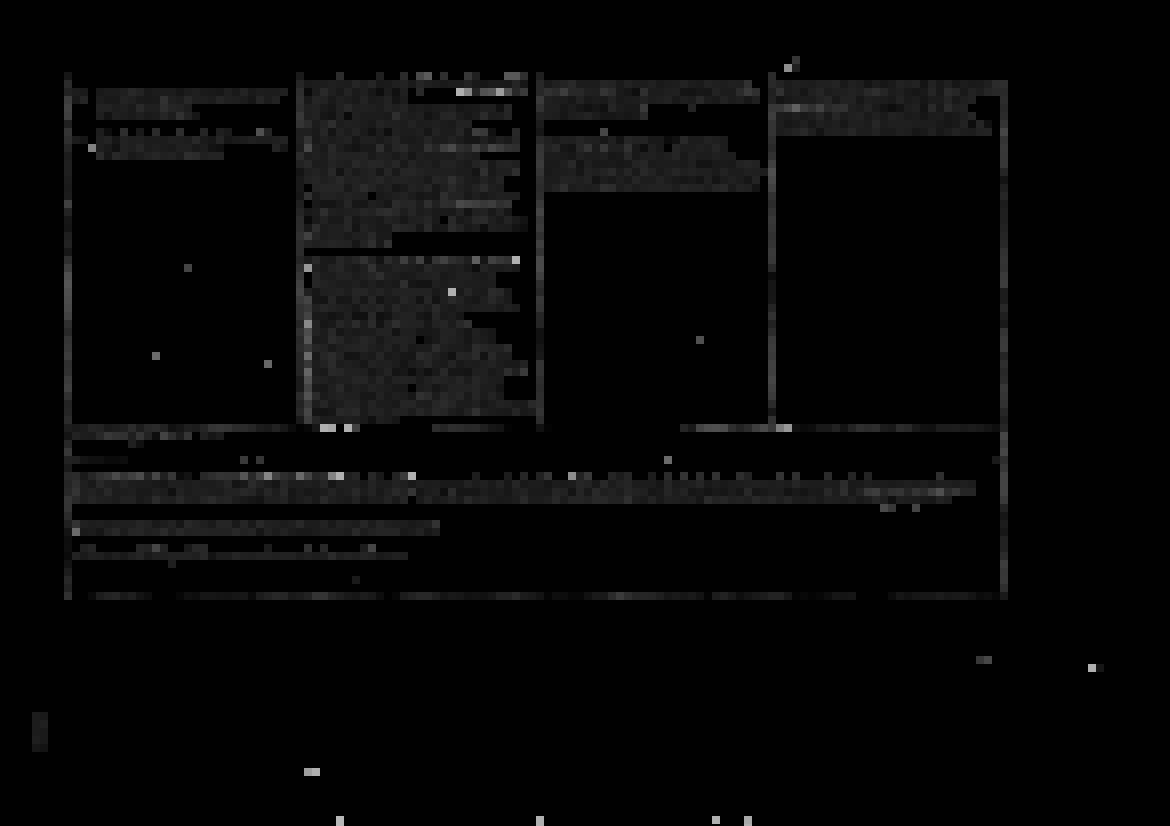
employment or Poiytech midyear did not have leve! 2.
NCEA Level 3: 1 Excellence and 8 merit course endorsements.
2 (9%) students gained NCEA Level 3 with a Merit Endorsement.
Of the students who stayed aii year 76% gained NCEA Levei 3, 5 not achieving. 9 students/ who left for employment through the year/ did not gain NCEA Level 3. They al! had NCEA levei 2.
Vocational Pathway Awards: 0 year 12 students gained a vocational pathway award in 2018. 5 year 13 students co'mpleted the year with a vocational pathway award.
While 89% of Year 12 students gained NCEA Level 2, overall only 3% NCEA Levei 2 students gained an NCEA Endorsement or Vocational Pathways Award. This was very disappointing and nowhere near what was expected.
Individual mentoring needed to be more focused on reaching merit and excellence ievels.
Vocational pathways - different departments did not provide the required opportunities for students to achieve the sector related standards
Through the Careers department and HODs/ we will investigate further opportunities for students to gain credits towards vocational pathways.
Planning for next year:
Monitoring progress of ail senior students is critical to the success of our students and the ability of students to achieve their goals. Making sure pathways provide opportunity for course endorsement is essential. House Group teachers will work with our students on goal setting and monitoring progress.
Opportunities for student and whanau voice will be increased.
Close monitoring of the new senior curriculum will occur.
Strategic Aim: Each student will receive an education that enables them to reach their highest level.
Annual Aim: Year 7-10 students will strive for persona! excellence.
Target:

Baseline Data:
1. At least 40% of students are achieving at a High or Excellent level in Writing and Mathematics by the end of year 10.
2. Year 9 - move at least 5 students from At to Above in writing
3. Year 9 - move at least 5 students from At to Above in mathematics
Year 10: (Year 9 2017): Reading 12 students (45%), Writing 6 students (23%), Number 7 students (26%) Above the standard
Year 9: Baseline data (Y8 2017): 2(5%) students Above in Reading, 1(2%) students Above in Writing/ 4 (10%) students Above in Mathematics
In Writing 7 students dropped from Above to At from year 7 to year 8, the same occurring in Mathematics.
Actions
What did we do?
Focus on personal excellence school wide.
Targeted interventions by classroom teachers.
Students identified within each class.
Close monitoring of student progress.
Year 10 Reading and Writing diploma embedded in English course.
Focus on writing across the curricuium as part of the Kahui Ako initiative
Writing: High or Excellence level at Year 10- 27%
Although the target of 40% was not reached in year 10, there was considerable progress made by the students over the year.
Writing Year 9 - 4 students moved from At to Above in writing during the year. Although the target of 5 students was not achieved/ there was generally good progress across the board in year 9 writing.
Mathematics Year 10 - Target partially achieved 44% of students High or Excellence level in number, not so high in other strands.
Reasons for the variance Why did it happen?
Year 10: Emphasis on writing across the curricuium, and a particular focus on writing skills in English, saw considerabie progress by students over the year.
Year 9: Emphasis was again placed on writing skills, and improving puncfcuation and grammar/during the year. Cross curricular emphasis on writing continued through the year.
Modelling excellence continues to be an expectation for 2019.
The focus on writing across the curricuium will also continue.
Kahui Ako professional development around writing wiii continue in 2019.
Spiral of inquiry based research pods, across the Kahui Ako, will continue in 2019.
The Year 9 cohort in 2018 generally achieved lower than in previous cohorts. Focus must continuing on lifting their achievement levels.
Mathematics Year 9-6 (18%) students are achieving at the high or excellence level in mathematics compared to 4 of these students doing so in 2017. Although the target hasn't been met (to move 5 students from At to Above)/ there has generally been good progress by the students.

Planning for next year:
Clear monitoring of student achievement will be a focus across ali curriculum areas. An emphasis on striving for persona! excellence in a!i we do will continue in 2019.
Strategic Aim
Annual Aim:
Target:

Baseline Data:
Each student will make progress throughout their education through effective teaching/ relationships/ assessment and resourcing
Maori students will make progress at a rate at least equal to that of non-Maori:
Year 9: in Writing and Mathematics
1. Move at least 3 Maori students from Below to At
2. Move 2 student from At to Above.
Year 9 Maori students (Y8 2017): Writing SB 1WB (67%) below the standard/ Mathematics 9 (Y8 2017} 4 (50%) below the standard.
Actions
What did we do?
Teachers to include Maori students in their targeted groups
AREA data (Attendance, Retention/ Engagement, Achievement) to be analysed for Maori students
Mentoring of Maori students
Kaiako continues to work as Dean and mentor for Maori students
Outcomes What happened?
Writing Year 9 - The statistics show that Maori students are not achieving at an equal rate to non-Maori. Percentage-wise more Maori (67%) are below the expected curriculum level than non-Maori (21%).
Mathematics Year 9 - 67% (6) of Maori students at or above the expected level. 33% are stili below the standard compared to 28% of non-Maori. 1 Maori student achieved well above the expected level.
Planning for next year:
Continue to build teacher understanding ofTataiako.
Kahui Ako focus on Culturai Responsiveness integrated into a!i we do.
Reasons for the variance Why did it happen?
Absences in this group did affect the continuity of learning. Next year as in previous years, we will do our best to build relationships with our students/ use group work/ include positive texts with a Maori aspect and improve our understanding ofTataiako.
Evaluation Where to next?
In student reviews include reference to Tataiako statements in questions given to students as this will assist in providing their perspective on the learning that has taken place.
Continue to focus on the aspects of Tataiako through teacher professional learning.
Annual Aim:
Target:

Each student will make progress throughout their education through effective teaching, relationships, assessment and resourcing
Year 7-10 students will make progress against the curriculum levels.
1. Year 10-At least 80% of students are writing at level 4/5 of the curriculum.
2. Year 9 - At least 80 % are At or Above level 4 of the curriculum in mathematics.
3. Year 8 - At least 85% are At or Above the standard in many aspects in mathematics and writing.
4. Year 7 - At least 75% are At or Above the standard in writing
Baseline Data: Baseline data:
Year 8 - Mathematics (Y7 2017): 18% below the standard
Year 9 - Mathematics (Year 8 2017): 31% beiow expected level
Year 10 - Mathematics (Year 9 2017}: 39% below expected level.
Actions
What did we do?
Standardised testing early in the year to enable target groups to be identified.
Targeted interventions by classroom teachers.
Ciose monitoring of the progress of target students.
PD support for junior mathematics teachers - identify and share teacher strengths.
Continue to develop teacher expertise in working with PaCT.
Develop a targeted writing plan for year 9 and 10.
Peer tutoring by.student volunteers. Initially focused on year 7 then extending to other levels.
Year 10 - At least 80% of students are writing at level 4/5 of the curriculumAchieved.
Although 53% of the students at year 10 are still below the expected ievel to cope with NCEA level 1 in 2019,the focus on writing did see many students move up a level. The PAT Punctuation and Grammar test showed a significant shift - average stanineform 4 to 5.1.
Year 9 - 71% of the year 9 students are at or above the expected level. This is a drop from 2017.
Year 8 - 73% achieving At or Above the expected level in mathematics and 82% in writing. Target of 85% not met.
Year 7 -63% of year 7 students At or Above the expected standard by the end of the year - target not met.
Baseline data:
Year 10 - Writing (Year 9 2017}: 75% at or above level 4 of the curriculum
Year 9 - Writing (Year 8 2017}: 62% at or above the standard.
Year 8 - Writing (Year 7 2017); 82% at or above the standard
Year 7 -Writing (Year 6 2017): 45% below the standard
Focus on writing across the curriculum helped support the improvement in writing skills for students of all year levels.
Mentoring by House Group teachers to be strengthened.
Consistent monitoring of student progress across the mathematics department.
Consistency of marking criteria across year 7 to 10 in writing.
Continue to us the junior diploma to encourage students to strive for personal excellence.
Continue to focus on Positive behaviour for learning strategies.
From year 8 to year 9 five students moved off to boarding school. These do tend to be higher performing students.
Restorative practice continues to be at the centre of the learning focus.
COL-wide focus on raising achievement in Mathematics and Writing

Planning for next year:
Introduce MyMahi as a tool to support goa! setting and mentoring of students across all year levels - cost involved in accessing this for all students.
Provide training for teachers - Within School Kahui Ako teacher leading this.
Monitoring student progress wiii be more explicit across year 7/8 literacy and junior mathematics.
Continue to deveiop consistency of interpretations of levels in reading/ writing and mathematics across ail year levels - Kahui Ako focus for Writing, Mathematics.
ALiM - across the Kahui Ako.
Focus on carefully monitoring the year 10 cohort for 2019 - continue with the focus on the writing skills.
Strategic Aim:
Annual Aim:
Target:
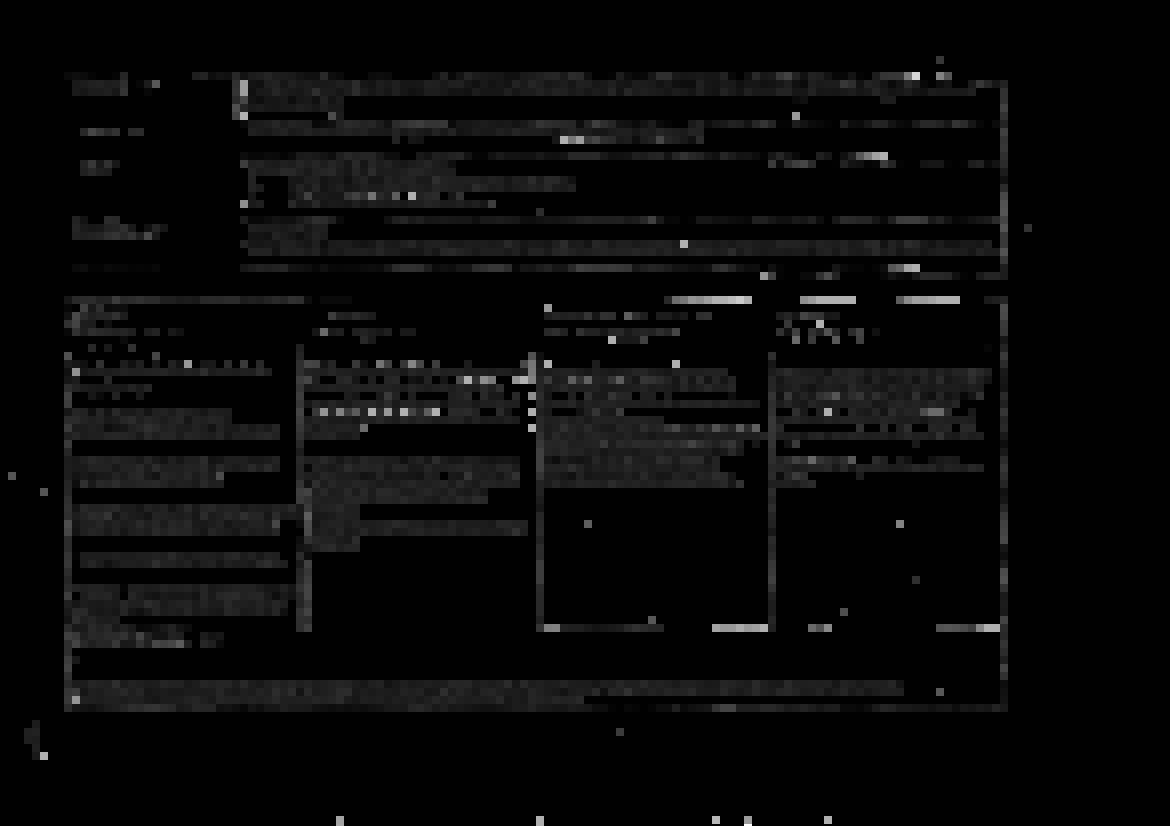
Baseline Data:
Each student will make progress throughout their education through effective teaching, relationships, assessment and resourcing
Maori students will make progress at a rate at least equal to that of non-Maori.
1. Move at least 3 Maori students from Below to At
2. Move 2 student from At to Above.
Baseline data:
Year 9 Maori students (Y8 2017}: Writing SB 1WB (67%) below the standard/ Mathematics 9 (Y8 2017) 4 (50%) beiow the standard.
Actions
What did we do?
Teachers included Maori students in target groups.
Worked hard to buiid positive relationships with our Maori students.
Kaiako given time to work as dean and mentor for Maori students.
Funding put into providing tutor for Kapa haka and other cultural opportunities.
Target groups included Maori students.
Writing-strategies used Scaffolding, Use of exemplars. Pair writing. Collaborative writing
Planning for next year:
Outcomes What happened?
Writing: Year 9-1 Maori student moved from Below to At. 0 Maori students moved from At to Above. 67% of Maori students (6 students) are still below the standard.
Mathematics: Year 9-1 Maori students moved from Below to At. Only 1 Maori student Well Above, 0 Above the standard. 67% of all Maori students At or Above the standard.
Reasons for the variance Why did it happen?
Evaluation Where to next?
A group of year 9 Maori boys were difficult to engage in aspects of their learning this year. Absences was an issue for many in this group. Although there was a focus on developing writing across the curricuium/ we still have many of our Maori students struggling to reach the required level.
Next year as in previous years, we wiii do our best to buiid relationships with our students/ use group work, include positive texts with a Maori aspect and improve our understanding ofTataiako.
Further lift the profiie of our Pa Kakano group.
Continue to focus on building our relationships with Maori students and whanau. Develop a dearer understanding on what Maori learning as Maori looks like. Make the voice of our Maori students heard, both in the classroom and in the wider school arena.
Strategic Aim:
Annual Aim:
Target:

Baseline Data:
Parents, family and whanau are actively engaged in supporting the mission and values of our school.
Parents are engaged with our school and the learning of their children.
1. At least 80% of parents attend parent/student/teacher conferences.
2. Parents /caregivers make contact with classroom teachers through phone/ email.
3. Teachers make contact with parents/caregivers at least once a month.
Baseline data: 2017 - 72% of parents came to mentor teacher / student /parent interviews in term.
Developed a stronger transition system through our Kahui Ako Within School teacher.
House Group teacher contacted home more frequently - by phone cail/ text/ emaii.
Further developed a mentor system through the House Group, interviews were held regularly between students and their mentor. Parent and student conferences with the mentor teachers were held twice during the year as well as subject teacher parent student meetings being held once. The focus was to make these student led and to focus on next steps.
Encourage parents to become involved with school sports teams.
Invite members of our iocal community to suDDort the [earning of our tamariki. Planning for next year:
Year 7 students quickly settled into the school.
The number of parents attending the parent/student/ teacher sessions was disappointing compared to the previous year. About 70% of students attended the first session however this dropped to about 30% later in the year.
Reasons for the variance Why did it happen?
Detailed information about the students transitioning into our schooi
Open classroom once a week in year 7, inviting whanau members to join in with the students.
Some parents indicated they had a good feel for where the students were at with their teaming - due in part to the more frequent communication with Hose Group teachers and deans.
Continue to develop the transition process for our new students.
Personal approach to parents is important when inviting them to parent/student/teacher evenings.
Many parents are involved I helping with sports teams - coaching, managing, driving.
Emphasis will continue on the personal relationships developed between the staff and whanau. We wiil provide further opportunities for members of our school community, and the wider community, to be involved with our school.

Kiwisport is a Government funding initiative to support students' participation in organised sport.
During 2018, Tokomairiro High School received a total Kiwisport funding of $4728.48 (excl GST)
The funding was spent on the Sports Coordinator's wages, outside sports coaches and additional sporting equipment.
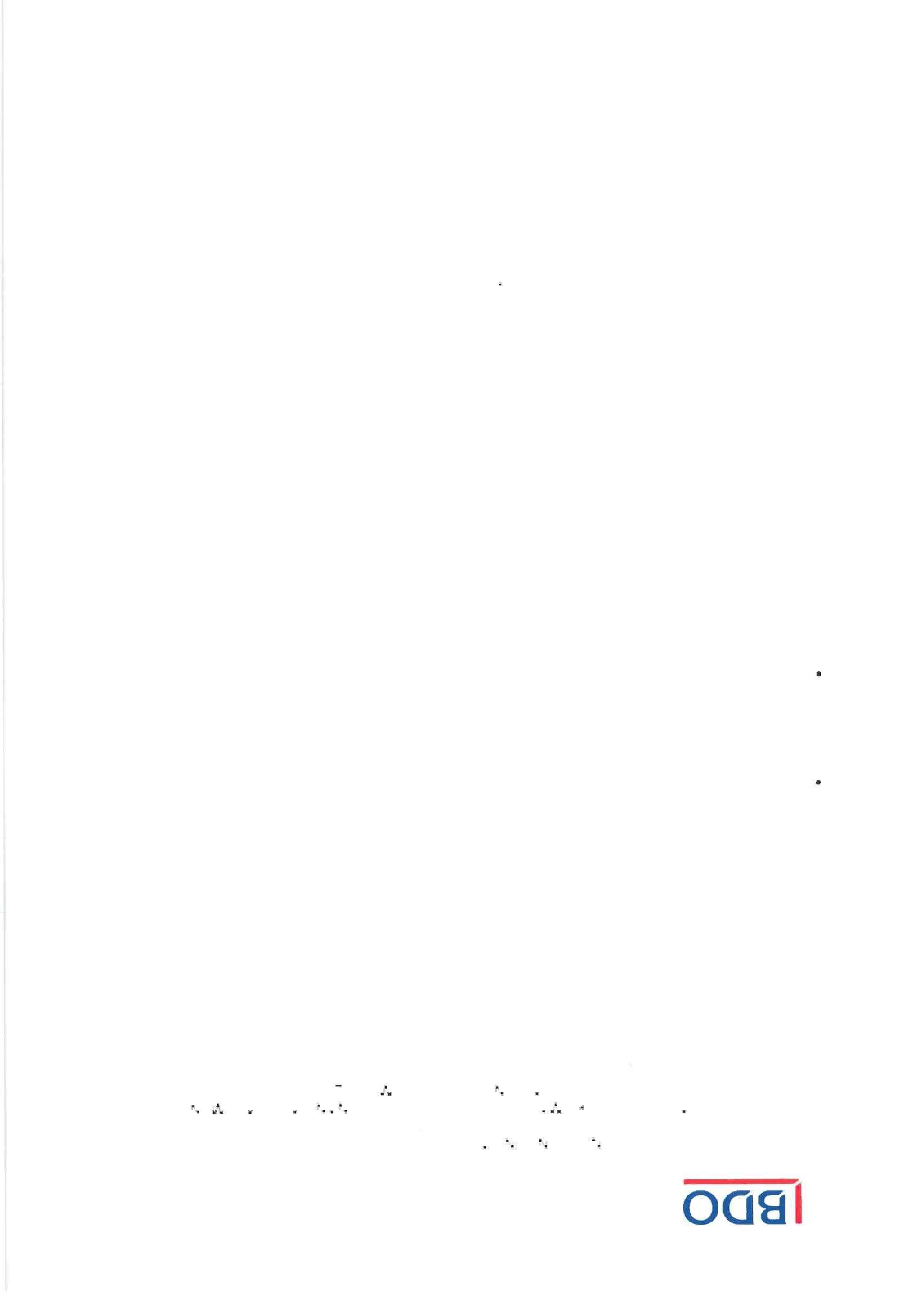
Tel: +64 3 218 2959 BDO INVERCARGILL
Toll Free: 0800 182 959 136 Spey Street, Fax: +64 3 218 2092 InvercargUl 9810. invercargill@bdo.co.nz PO Box 1206, www.bdo.co.nz InvercarsiUl 9840, New Zealand
The Auditor-GeneraI is the auditor of Tokomairiro High School (the School). The Auditor-General has appointed me, G N Thomas, using the staff and resources of BDO Invercargill, to carry out the audit of the financial statements of the School on his behalf.
Opinion
We have audited the financial statements of the School on pages 3 to 19, that comprise the statement of financial position as at 31 December 2018, the statement of comprehensive revenue and expense, statement of changes in net assets/equity and statement of cash flows for the year ended on that date, and the notes to the financial statements that include accounting policies and other explanatory information.
In our opinion the financial statements of the School:
• present fairly, in all material respects:
o its financial position as at 31 December 2018; and
o its financial performance and cash flows for the year then ended; and
• comply with generally accepted accounting practice in New Zealand in accordance with Public Sector- Public Benefit Entity Standards, Reduced Disclosure Regime.
Our audit was completed on 31 May 2018. This is the date at which our opinion is expressed.
The basis for our opinion is explained below. In addition, we outline the responsibilities of the Board of Trustees and our responsibilities relating to the financial statements, we comment on other information, and we explain our independence.
Basis for our opinion
We carried out our audit in accordance with the Auditor-General's Auditing Standards, which incorporate the Professional and Ethical Standards and the International Standards on Auditing (New Zealand) issued by the New Zealand Auditing and Assurance Standards Board. Our responsibilities under those standards are further described in the Responsibilities of the auditor section of our report.
We have fulfilled our responsibilities in accordance with the Auditor-GeneraI's Auditing Standards.
We believe that the audit evidence we have obtained is sufficient and appropriate to provide a basis for our opinion.
The Board of Trustees is responsible on behalf of the School for preparing financial statements that are fairly presented and that comply with generally accepted accounting practice in New Zealand. The Board of Trustees is responsible for such internal control as it determines is necessary to enable it to prepare financial statements that are free from material misstatement, whether due to fraud or error.
In preparing the financial statements, the Board of Trustees is responsible on behalf of the School for assessing the School's ability to continue as a going concern. The Board of Trustees is also responsible for disclosing, as applicable, matters related to going concern and using the going concern basis of accounting, unless there is an intention to close or merge the School, or there is no realistic alternative but to do so.
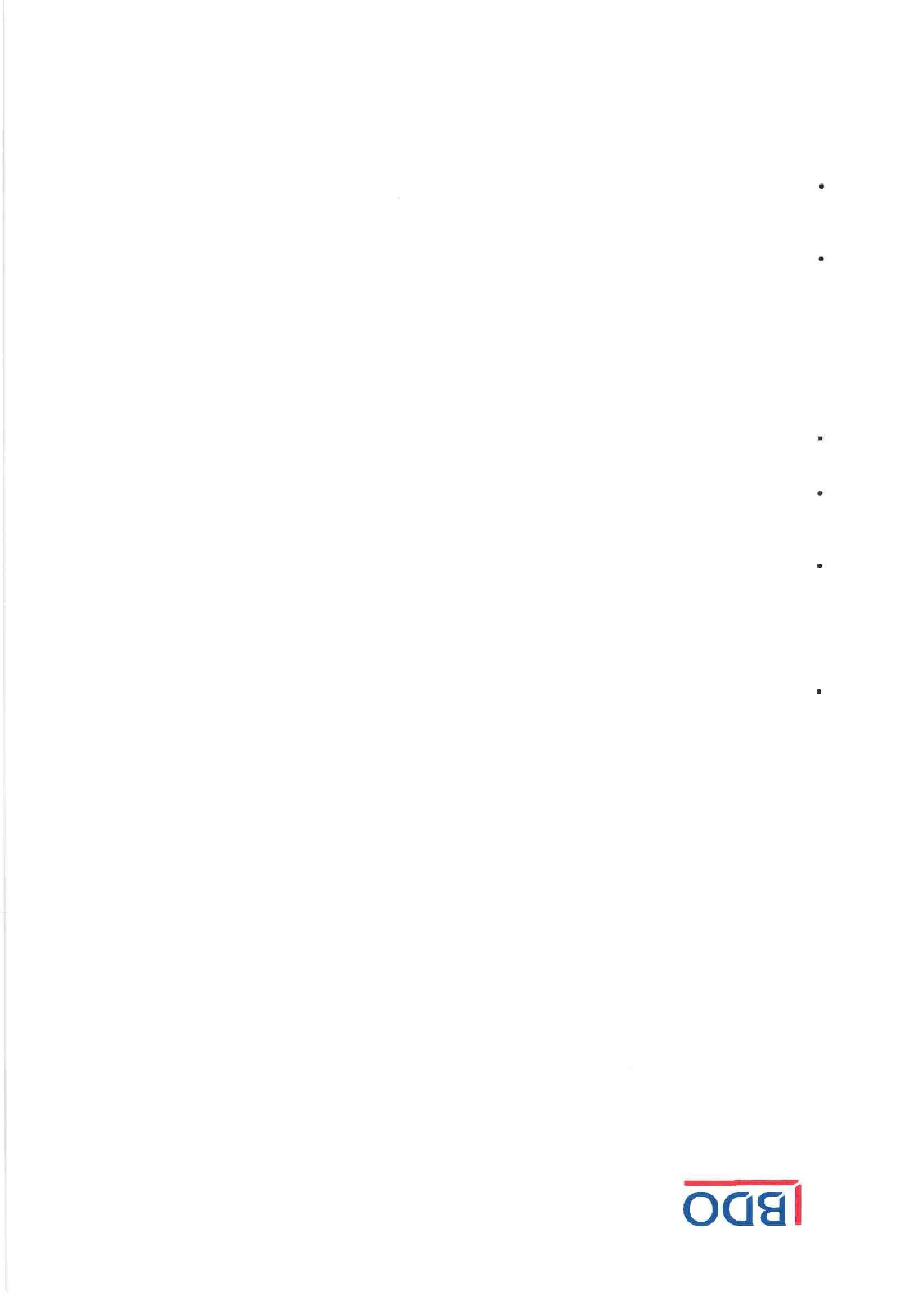
Tel: +64 3 218 2959 BDO INVERCARG1LL
Toll Free: 0800 182 959 136 Spey Street, . Fax: +64 3 218 2092 Invercargill 9810. invercargill@bdo.co.nz PO Box 1206, www.bdo.co.nz Invercargill 9840, New Zealand
The Board of Trustees' responsibilities arise from the Education Act 1989.
Responsibilities of the auditor for the audit of the financial statements
Our objectives are to obtain reasonable assurance about whether the financial statements, as a whole, are free from material misstatement, whether due to fraud or error, and to issue an auditor's report that includes our opinion.
Reasonable assurance is a high level of assurance, but is not a guarantee that an audit carried out in accordance with the Auditor-General's Auditing Standards will always detect a material misstatement when it exists. Misstatements are differences or omissions of amounts or disclosures, and can arise from fraud or error. Misstatements are considered material if, individually or in the aggregate, they could reasonably be expected to influence the decisions of readers taken on the basis of these financial statements.
For the budget information reported in the financial statements, our procedures were limited to checking that the information agreed to the School's approved budget.
We did not evaluate the security and controls over the electronic publication of the financial statements.
As part of an audit in accordance with the Auditor-General's Auditing Standards, we exercise professional judgement and maintain professional scepticism throughout the audit. Also:
• We identify and assess the risks of material misstatement of the financial statements, whether due to fraud or error, design and perform audit procedures responsive to those risks, and obtain audit evidence that is sufficient and appropriate to provide a basis for our opinion. The risk of not detecting a material misstatement resulting from fraud is higher than for one resulting from error, as fraud may involve collusion, forgery, intentional omissions, misrepresentations, or the override of internal control.
• We obtain an understanding of internal control relevant to the audit in order to design audit procedures that are appropriate in the circumstances, but not for the purpose of expressing an opinion on the effectiveness of the School's internal control.
• We evaluate the appropriateness of accounting policies used and the reasonableness of accounting estimates and related disclosures made by the Board of Trustees.
• We conclude on the appropriateness of the use of the going concern basis of accounting by the Board of Trustees and, based on the audit evidence obtained, whether a material uncertainty exists related to events or conditions that may cast significant doubt on the School's ability to continue as a going concern. If we conclude that a material uncertainty exists, we are required to draw attention in our auditor's report to the related disclosures in the financial statements or, if such disclosures are inadequate, to modify our opinion. Our conclusions are based on the audit evidence obtained up to the date of our auditor's report. However, future events or conditions may cause the School to cease to continue as a going concern.
• We evaluate the overall presentation, structure and content of the financial statements, including the disclosures, and whether the financial statements represent the underlying transactions and events in a manner that achieves fair presentation.
• We assess the risk of material misstatement arising from the Novopay payroll system, which may still contain errors. As a result, we carried out procedures to minimise the risk of material errors arising from the system that, in our judgement, would likely influence readers' overall understanding of the financial statements.

Tel: +64 3 218 2959 BDO INVERCARGILL
Toll Free: 0800 182 959 136 Spey Street, Fax: +64 3 218 2092 Invercargill 9810. invercargitl@bdo.co.nz PO Box 1206, www.bdo.co.nz Invercargill 9840, New Zealand
We communicate with the Board of Trustees regarding, among other matters, the planned scope and timing of the audit and significant audit findings, including any significant deficiencies in internal control that we identify during our audit.
Our responsibilities arises from the Public Audit Act 2001.
The Board of Trustees is responsible for the other information. The other information comprises the analysis of variance, kiwisport paragraph and BOT listing included on pages 20 to 30, and page 2 respectively but does not include the financial statements, and our auditor's report thereon.
Our opinion on the financial statements does not cover the other information and we do not express any form of audit opinion or assurance conclusion thereon.
In connection with our audit of the financial statements, our responsibility is to read the other information. In doing so, we consider whether the other information is materially inconsistent with the financial statements or our knowledge obtained in the audit, or otherwise appears to be materially misstated. If, based on our work, we conclude that there is a material misstatement of this other information, we are required to report that fact. We have nothing to report in this regard.
We are independent of the School in accordance with the independence requirements of the AuditorGeneral's Auditing Standards, which incorporate the independence requirements of Professional and Ethical Standard 1 (Revised): Code of Ethics for Assurance Practitioners issued by the New Zealand Auditing and Assurance Standards Board.
Other than the audit, we have no relationship with or interests in the School.
G N Thomas BDO InvercargillOn behalf of the Auditor-General Invercargill, New Zealand